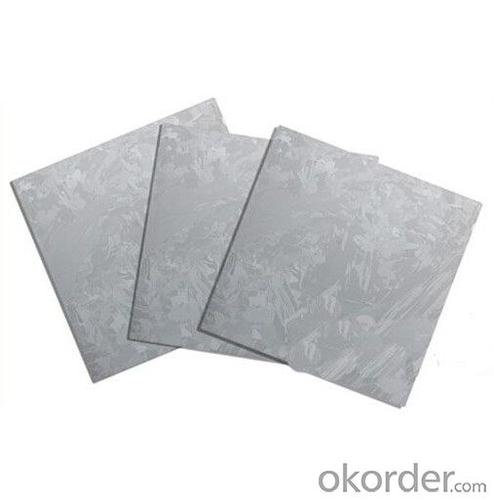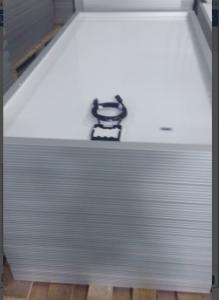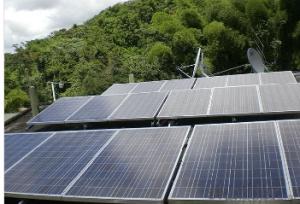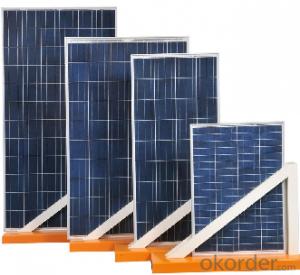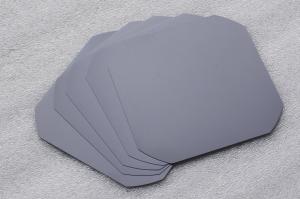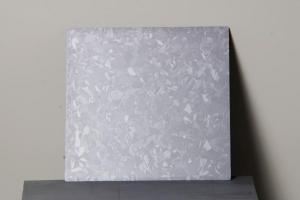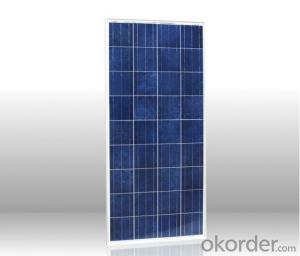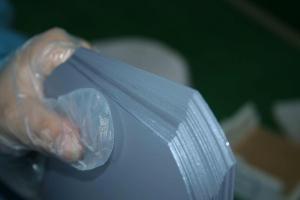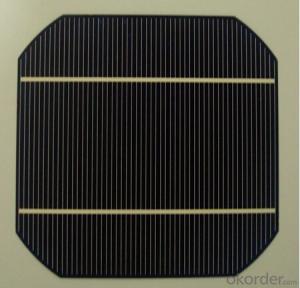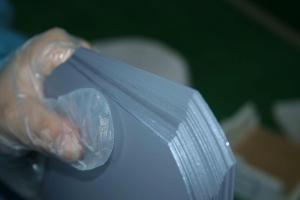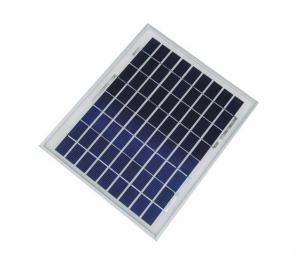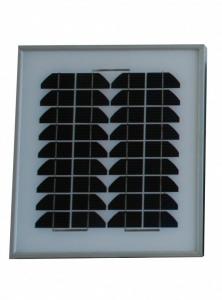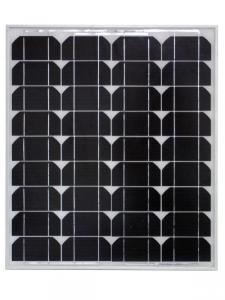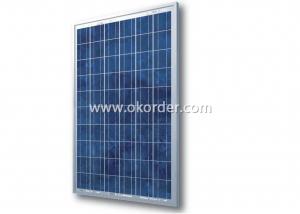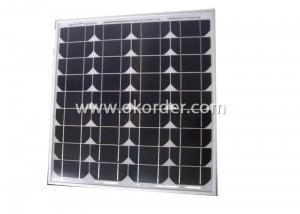Eufy Solar Panels - Monocrystalline Silicon Solar Wafer 125*125mm
- Loading Port:
- China main port
- Payment Terms:
- TT or LC
- Min Order Qty:
- 100000 pc
- Supply Capability:
- 1000000 pc/month
OKorder Service Pledge
OKorder Financial Service
You Might Also Like
1. Structure of Monocrystalline Silicon Solar Wafer 125*125mm Description
A wafer, also called a slice or substrate, is a thin slice of semiconductor material, such as a crystalline silicon, used in electronics for the
fabrication of integrated circuits and in photovoltaics for conventional, wafer-based solar cells. The wafer serves as the substrate for
microelectronic devices built in and over the wafer and undergoes many microfabrication process steps such as doping or ion implantation,
etching, deposition of various materials, and photolithographic patterning. Finally the individual microcircuits are separated (dicing) and
packaged.
2. Main Features of the Monocrystalline Silicon Solar Wafer 125*125mm
• monocrystalline solar wafer 125*125mm
•Conductivity Type: P type
•Dopant: Boron
•Resistivity: 1~3 ohm
•thickness: 200um.
3. Monocrystalline Silicon Solar Wafer 125*125mm Images
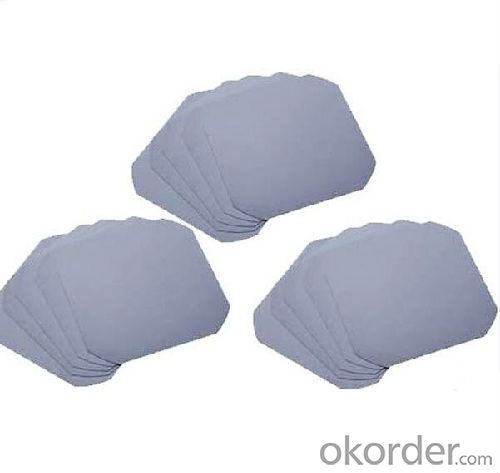
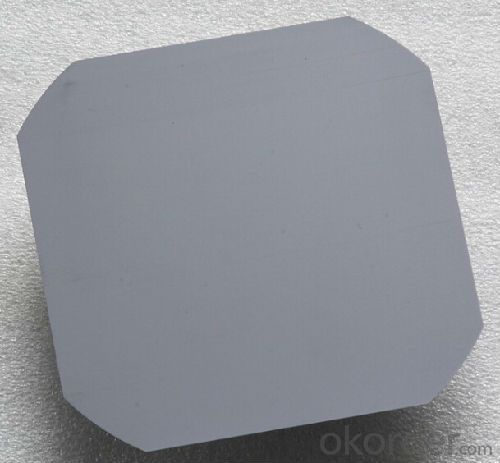
4. Monocrystalline Silicon Solar Wafer 125*125mm Specification
Type: | P |
Dopant: | Boron |
Resistivity: | 1.0-3(ohmNaN) |
Dimension: | 125 x 125±0.5 (mm) |
Thickness: | 200±20 (μm) |
Oxygen Content: | ≤1 x 1018 |
Carbon Content: | ≤5x 1016 |
Minority Carrier Lifetime: | ≥2 (us) |
Microcrystal: | 10/cm2 |
Saw Depth: | <20 (μm) |
TTV: | <=30(μm)< span=""> |
Bow: | 50 (μm) |
Bevel Edge Angle: | 90°±0.3 |
Bevel Edge Length: | 1±0.5 (mm) |
Rectangular Angle | 0.3° |
Edge Defect: | No crack, no V-Shape Chip |
Surface Quality: | As cut, cleaned, no stain; |
No water mark, no contamination, no pits on the surface. | |
Edge Chips: | Length0.5mm, Depth0.3mm, |
2 per wafer |
5. FAQ of Monocrystalline Silicon Solar Wafer 125*125mm
Q1:Can we visit your factory?
A1:Sure,welcome at any time,seeing is believing.
Q2:Which payment terms can you accept?
A2:T/T,L/C,Moneygram,Paypal are available for us.
- Q: Why can not the solar panel load directly?
- Solar panels because of low power, and the output voltage is extremely unstable, not suitable for load.
- Q: How much electricity does a solar panel produce?
- The amount of electricity a solar panel produces depends on several factors, including the size of the panel, its efficiency, the amount of sunlight it receives, and its location. On average, a standard residential solar panel can produce anywhere from 250 to 400 watts of electricity per hour under optimal conditions.
- Q: Alright my family and i are buying a new home in Bradford,Ontario, we we thinking about solar panels and had a couple questions:. how much are they each?2. how many will we need to power a single family home(4 ppl)3. where can we find them in ontario?4.how much money do they really save you?5.what kind of energy do they providfe you withand other basic info or a website i can check out would be great!thanks in advance!
- the first person is absolutely wrong. A 200 watt panel is $000US. By the time you buy mounting systems, wire, inverters, electric panels, interconnects, labor and permits/inspections, the cost is about $7/watt. if you use 700 kw-hr (please look at the units, you use kw-hr NOT kw) per month that 24 kw-hr per day. in your area, a pv system will supply about 4 hours at peak production of the panels, so you will need 6kw in panels, that's about 30 panel or $42,000 in equipment.
- Q: Can solar panels be used in areas with high pollution?
- Yes, solar panels can be used in areas with high pollution. While pollution can reduce the efficiency of solar panels to some extent, they can still generate electricity in such areas. Regular cleaning and maintenance of the panels can help mitigate the impact of pollution and ensure their optimal performance. Additionally, the use of advanced technologies and materials in solar panel production can further enhance their resilience to pollution.
- Q: I've run out of things to keep me entertained recently and as part of a larger project, I was curious if its possible to 'McGuyver' up a solar panel out of common materials?
- Building your own panels can be an interesting experiment, but if you are looking for solar panels to provide significant, consistent output, you should buy factory made ones. I get lots of calls from people who built their own panels and get a fraction of the advertised output from them. Plus, factory built panels will last 40 - 50 years, with a 25 year warranty, how sure are you that you can build something that can withstand the outdoors for that long? The price of panels has dropped a lot this year, plus with rebates and tax credits, it's getting more affordable.
- Q: How do solar panels affect the insurance premiums of a home?
- Solar panels can potentially have a positive impact on home insurance premiums. While the initial installation cost of solar panels may increase the value of a home, they can also lower the risk of fire damage and reduce reliance on the grid. As a result, some insurance companies offer discounts or special policies for homes with solar panels, which may lead to lower insurance premiums in the long run. However, it is important to consult with individual insurance providers as policies can vary.
- Q: how big of an solar panel do i need to power/charge my laptop?would one from canadian tire sell the right one?
- Yes. Basically, here's what you need (I'm keeping this general on purpose): The panels themselves -- how large an area depends on average power consumption and how much power you can get on average. That, in turn , depends on climate. You'd need more in Seattle than Tuscon, for example. I'd guess something in the neighborhod of 0 square feet. Depends also on haow many gadgets (printers, etc.) you have. You'll need a power storage system. Lithium gives you the best poser density (of off-the-shelf stuff) but an ordinary car battery works well and is reliable. And, of course, a control system to manage the power generation/storage/use so everything works together without that annoying smell that tells you you just cooked a few hundred bucks worth of equuipment! :)
- Q: i am working on a project which requires small solar panels. i am looking for ones about 3X4. is there any way i could get these? and where?
- There okorder
- Q: Can solar panels be installed on mountain huts or lodges?
- Yes, solar panels can be installed on mountain huts or lodges. In fact, mountainous regions with ample sunlight can be ideal locations for solar panel installations. These panels can harness the sun's energy and convert it into electricity, providing a sustainable and reliable source of power for the huts or lodges.
- Q: Its cloudy out and i have a solar panel that has 3, .5 volt cells But how do i charge it without sun any other ways?
- For the best answers, search on this site https://shorturl.im/awXJ0 The charge controller will protect the battery. You might want to think about getting a fuse.
Send your message to us
Eufy Solar Panels - Monocrystalline Silicon Solar Wafer 125*125mm
- Loading Port:
- China main port
- Payment Terms:
- TT or LC
- Min Order Qty:
- 100000 pc
- Supply Capability:
- 1000000 pc/month
OKorder Service Pledge
OKorder Financial Service
Similar products
Hot products
Hot Searches
Related keywords


